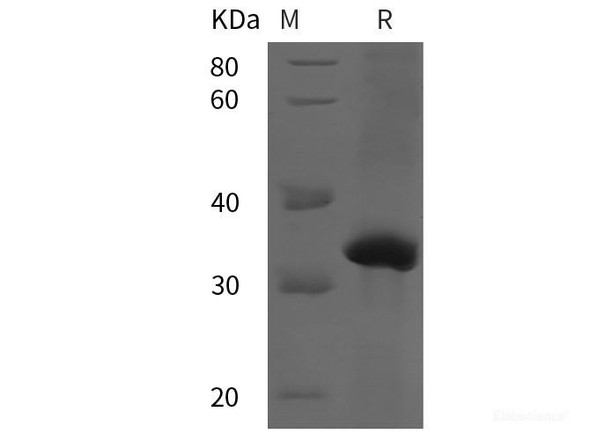Description
| Product Name: | Human MMP16 Recombinant Protein (His tag) |
| Product Code: | RPES5643 |
| Size: | 20µg |
| Species: | Human |
| Expression Host: | E.coli |
| Synonyms: | Matrix metalloproteinase-16, MMP16, |
| Mol Mass: | 32.89 kDa |
| AP Mol Mass: | 35 kDa |
| Tag: | N-His & C-His |
| Purity: | > 95 % as determined by reducing SDS-PAGE. |
| Endotoxin Level: | Please contact us for more information. |
| Bio Activity: | Testing in progress |
| Sequence: | Ala 151-Lys 450 |
| Accession: | P51512 |
| Storage: | Generally, lyophilized proteins are stable for up to 12 months when stored at -20 to -80°C. Reconstituted protein solution can be stored at 4-8°C for 2-7 days. Aliquots of reconstituted samples are stable at < -20°C for 3 months. |
| Shipping: | This product is provided as lyophilized powder which is shipped with ice packs. |
| Formulation: | Lyophilized from sterile PBS, pH 7.4. Normally 5 % - 8 % trehalose, mannitol and 0.01% Tween80 are added as protectants before lyophilization. Please refer to the specific buffer information in the printed manual. |
| Reconstitution: | Please refer to the printed manual for detailed information. |
| Background: | Matrix metalloproteinases (MMPs) are a family of zinc and calcium dependent endopeptidases with the combined ability to degrade all the components of the extracellular matrix (ECM). MMP-16 (MT3-MMP) is found in brain, lung, placenta, smooth muscle cells, and malignant tumor tissues including oral melanoma and renal carcinoma . MMP-16 has been shown to activate proMMP-2 and degrade various ECM components including native collagens. MMP-16 has been proposed to possess the potential to directly enhance the growth and invasiveness of cells in vivo, two critical processes for development and carcinogenesis . Structurally, MMP-16 consists of the following domains: a pro domain containing the furin cleavage site, a catalytic domain containing the zinc-binding site, a hinge region, a hemopexin-like domain, a transmembrane domain, and a cytoplamasic tail . The structure of the catalytic domain in complex with a hydroxamate inhibitor has been solved . The rhMMP-16PC consists of the pro and catalytic domains, which can be activated by treatment with furin. |






